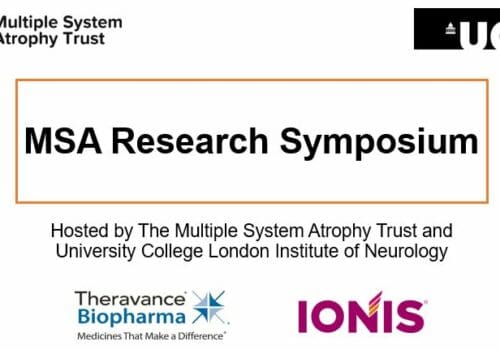New partners “in crime” within MSA brain cell lumps

In multiple system atrophy (MSA), lumps of a sticky protein called alpha-synuclein form in brain cells. In addition to alpha-synuclein, these lumps imprison other proteins as well. As proteins are vital machineries within cells, when they are not freely available to perform their normal “chores” cells may not function properly, and this may lead to death of nerve cells, as it happens in MSA and other neurodegenerative diseases.
In our previous MSA work, we identified problems in the instructions and messages that are needed for brain cells to produce the right amounts of proteins in each cell (see our previous blog here). Our work revealed considerable differences in DNA methylation between MSA and healthy brain tissue, i.e. differences in chemical modifications to the DNA that provide a type of on/off instructions for proteins to be made (details here). We also found changes in the amounts of messenger molecules (RNA) in MSA (details here).

Following up findings from our previous studies, we decided to carry out extra experiments in the lab to explore what happens to a couple of proteins in MSA, one of these proteins is called MOBP and the other HIP1. We know that in MSA some parts of the brain are greatly affected by a high number of the typical MSA sticky protein lumps, as it is the case of the cerebellum, whereas others are minimally affected by such lumps, as it happens in the occipital lobe. Therefore, we looked into these two parts of the brain: a) the cerebellum, which represents a severe stage of the disease, and b) the occipital lobe, which represents a mild stage of the disease. We found that in the MSA cerebellum there was less MOBP and HIP1 protein when compared with the cerebellum in other neurodegenerative diseases, including Parkinson’s disease. In MSA, we also found that the amounts of these proteins changed as the disease progressed. Most importantly, when we looked into where in brain cells MOBP and HIP1 appear, we found that in MSA, unlike in the other diseases we looked at, these proteins were very often misplaced into the typical MSA sticky protein lumps (full details here). Given that MOBP and HIP1 proteins are trapped into such lumps their capacity to perform their normal “chores” is reduced, and we think this is connected to processes that lead to nerve cell death in MSA. With the support from our funders, including the MSA Trust, we will continue to pursue this line of research to learn more about MSA.
By Dr Conceição Bettencourt, Senior Research Fellow at Queen Square Brain Bank for Neurological Disorders, UCL Queen Square Institute of Neurology
Disclaimer: The views and opinions expressed in the blogs published on these pages are those of the authors and do not necessarily reflect the official policy or position of the MSA Trust.




